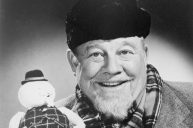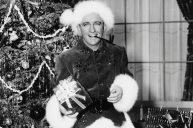In Clement Clarke Moore's 1823 poem "A Visit From Saint Nicholas," he named the eight reindeer that drive Santa Claus' sleigh every Dec. 24: Dasher, Dancer, Prancer, Vixen, Comet, Cupid, Dunder and Blixem. Over time, Dunder became Donner and Blixem got rechristened as Blitzen. Otherwise, the lore remained unchanged for almost a century. In 1939, copywriter Robert L. May added the rare wrinkle to Christmas Eve expectations when he introduced Rudolph, a ninth, red-nosed reindeer called on to guide the sleigh on foggy nights.
Videos by Wide Open Country
The reindeer roster has now run nine deep for nearly as long as it stayed at eight because Rudolph became a permanent part of the Santa Claus legend. May's children's book helped, as did a song penned by his brother-in-law, prolific Christmas songwriter Johnny Marks, and a holiday TV special filled with memorable songs and stop-motion puppets. Nowadays, it's hard to imagine a holiday season without the song that tells us Rudolph's underdog to hero journey— or to come up with an explanation for children wondering how Santa will maneuver bad weather and do his once-a-year job. And the Marks song's pronouncement that Rudolph's the "most famous reindeer of all" isn't hyperbole.
Ultimately, May and others that've added to the Rudolph story captured imaginations around the world and made the rare permanent addition to kids' visions of Santa traveling from house to house and delivering toys after scooting down their chimneys,
Read on to learn the full story of Rudolph and the media he's inspired.
Children's Book Origins
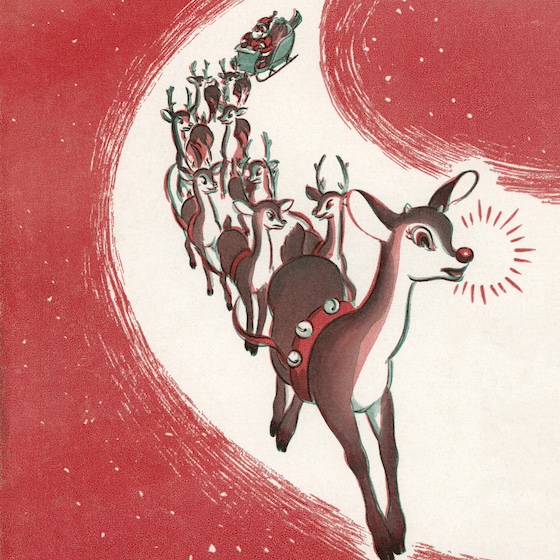
GraphicaArtis/Getty Images
The origins of May's story are as sad as Rudolph's time as a young buck. May was a copywriter living in Chicago. He was depressed with his life; his wife was incredibly ill at the time and he had dreamed of becoming a novelist. Montgomery Ward asked him to come up with a character for their seasonal coloring book. So, he created Rudolph, who was different from the other reindeer but able to save Christmas Eve with his glowing, red nose.
May was initially inspired by The Ugly Duckling, a character he had always resonated as a young child. According to Time, the unhappy duckling was relatable for him as an adult, as well.
"'And how are you starting the new year?' I glumly asked myself,'" he later recalled, describing his mindset in early 1939 when he first received the assignment (as quoted by Time). "Here I was, heavily in debt at [nearly] 35, still grinding out catalog copy. Instead of writing the great American novel, as I'd once hoped, I was describing men's white shirts."
But Rudolph would change everything. After over 2 million copies of his story were distributed for free, Maxton Publishing Co. wanted to publish it in hardcover book form.
A Hit Song by a Country Music Legend
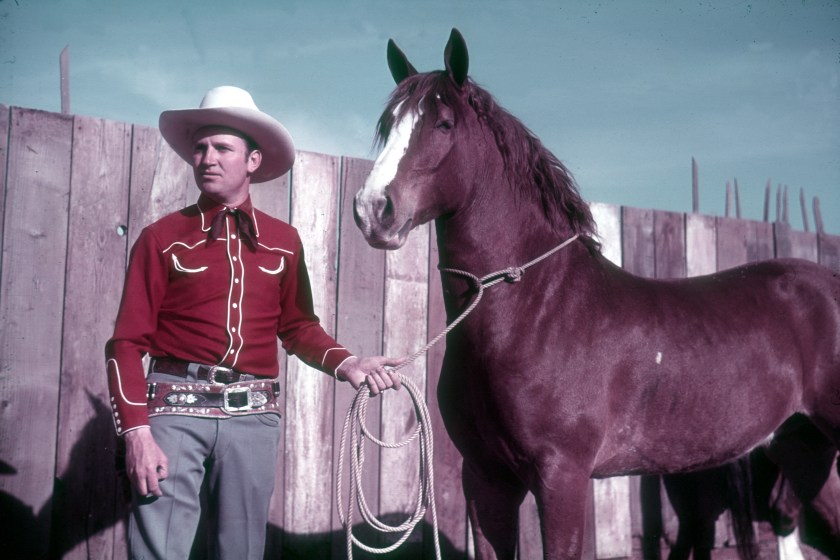
Ivan Dmitri/Michael Ochs Archives/Getty Images
Marks wrote some of the best-known holiday songs of the 20th century, including "Rockin' Around the Christmas Tree," "I Heard the Bells on Christmas Day," "Silver and Gold" and "Have a Holly Jolly Christmas." Fittingly, the last two got popularized by the 1964 Rudolph TV special.
Harry Brannon was the first artist to record the song, but it was Gene Autry who turned it into a No. 1 pop hit in 1949. A western film and country music pioneer, Autry's version became as inseparable from the Rudolph character as any other recording of the song or media about the character.
The song has been covered by some of the greatest artists in music history over the years ranging from Bing Crosby and The Temptations to Dean Martin and The Supremes.
There's a sequel that still gets a lot of play during the holiday season: Chuck Berry's 1959 song "Run Rudolph Run" (sometimes called "Run Run Rudolph" because of its chorus). On the parody end, Joe Diffie brought us the tale of "Leroy, the Redneck Reindeer" in 1995.
More recently, the lightheartedness of the song made it ideal cover material for artists ranging from BMX to Kacey Musgraves.
A Timeless TV Special
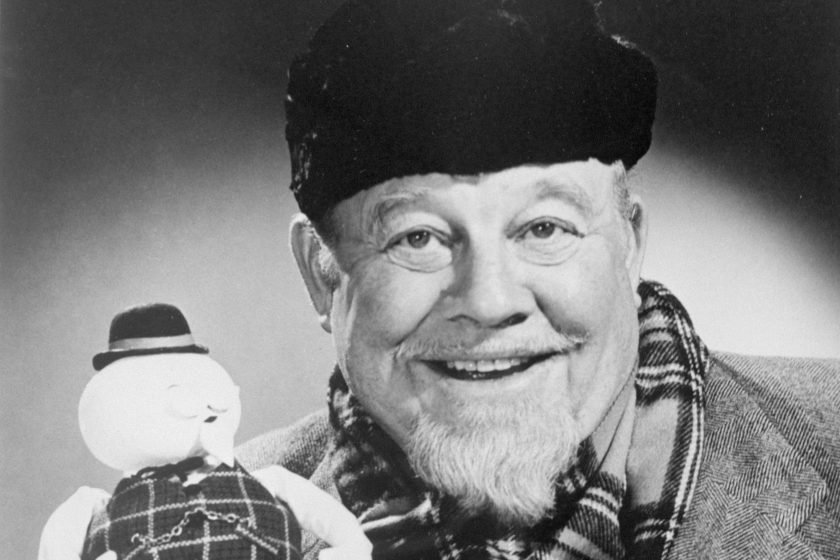
Bettmann / Contributor
In 1964, Romeo Muller was tasked with writing a TV special inspired by the popular Christmas tune. He wanted to base it on Mays' original book but couldn't find a copy of it. So, he had to get creative by introducing some new characters.
Muller's story centers around Rudolph leaving the North Pole because he doesn't like being different. He befriends prospector Yukon Cornelius and Hermey the elf as they search for a place where they belong. The trio fights an abominable snowman, discovers an island full of misfit toys and ultimately comes together to save Christmas with Rudolph's shiny red nose.
A highlight is the musical numbers, with folk singer Burl Ives —our banjo-slinging snowman narrator— singing "Silver and Gold."
The stop motion-animated special became an instant classic and has been televised every year since, making it the longest-running Christmas special of all time.
Muller went on to create more of the now-classic stop motion puppet specials, including Frosty the Snowman, Santa Claus is Coming to Town and The Little Drummer Boy.
Though the concept of young Rudolph being bullied for looking different received some criticism in recent years for its depiction of bullying, it hasn't changed the fact that it's a classic story with a happy ending that is now part of our annual holiday.
"Give me a break," Barbara May Lewis, the daughter of Rudolph creator Robert L. May, recently told Time. "The controversy makes no sense to me. The book itself had very little to do with it [the TV special], and it wasn't lauding bullying."
It wasn't the first depiction of Rudolph in a medium other than children's books and music. A 1948 animated short was true to May's book, as the song hadn't been recorded yet. The short was re-released in 1951 with the song added.
Since the 1964 special, there's been some less successful sequels: 1976's Rudolph's Shiny New Year and 1979's Rudolph and Frosty's Christmas in July.
In 1998, the unrelated and animated Rudolph the Red-Nosed Reindeer: The Movie failed at the box office despite a voice actor credits that list John Goodman, Richard Simmons and Whoopi Goldberg.
"Rudolph The Red-Nosed Reindeer" Lyrics:
Comet and Cupid and Donner and Blitzen
But do you recall
The most famous reindeer of all?
Had a very shiny nose
And if you ever saw it
You would even say it glows
Used to laugh and call him names
They never let poor Rudolph
Join in any reindeer games
Santa came to say
"Rudolph, with your nose so bright
Won't you guide my sleigh tonight?"
As they shouted out with glee
"Rudolph the Red-Nosed Reindeer
You'll go down in history"

